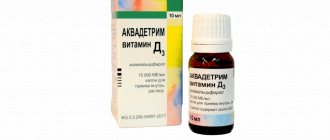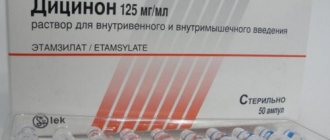Eye drops are medications to eliminate ophthalmological problems: dryness, inflammation, complications after operations. Among them are special drops that doctors use when conducting examinations and diagnostics. These medications include Tropicamide. But in the last 5 years, this drug has found another use - a drug.
Pharmacological properties of the drug Tropicamide-pharmak
Tropicamide (N-ethyl-alpha-(hydroxymethyl)-N-(4-pyridinylmethyl)benzoacetamide) blocks M-cholinergic receptors of the sphincter of the iris and ciliary muscle. Dilates the pupil, causing paralysis of accommodation. It acts quickly and does not last long. After a single instillation of 0.5% solution, pupil dilation begins after 5 minutes, reaches a maximum after 15–20 minutes and persists for 1 hour. Complete restoration of accommodation and pupil size occurs after 3–5 hours. After a single instillation of 1% solution -ra pupil dilation begins after 5 minutes, reaches a maximum after 20–45 minutes and persists for 2 hours. Maximum paralysis of accommodation after double instillation occurs 25 minutes from the moment of instillation and lasts about 30 minutes. Complete restoration of accommodation and pupil size occurs after 6 hours. It is slightly subject to systemic absorption (especially in children and the elderly).
Signs of an overdose of Tropicamide with systemic use
- Violation of accommodation, pupil dilation. The addict stops seeing nearby objects and sees only at a distance.
- Dryness of the skin and mucous membranes of the eyes, mouth, nose, etc. leading to hyperthermia (body temperature rises). The skin has a waxy tint.
- Slowness and inability to swallow
- Increased heart rate - tachycardia
- Confusion, anxiety, hyperexcitability, seizures,
- Delusional and hallucinogenic syndromes
Fatal outcome from an overdose of tropicamide eye drops develops as a result of blockade of the respiratory center of the central nervous system.
If your loved one experiences all of the symptoms described above, call 112 immediately, life and its quality depend on every minute of delay.
Use of the drug Tropicamide-pharmak
To open the bottle, pierce the top of the neck by turning the cap all the way. Instill into the conjunctival sac of the eye by lightly pressing the walls of the bottle. Application of 0.5% solution To study the fundus of the eye - 1-2 drops over 15-20 minutes, to study the condition of the lens and determine refraction - 1-2 drops twice with an interval of 5 minutes, if necessary, prolong the mydriatic effect after 20-30 min additionally instill 1 drop of the drug. Application of 1% solution For fundus examination: 1–2 drops 20–45 minutes before the procedure. To study the condition of the lens and determine refraction: 1–2 drops twice with an interval of 5 minutes; if it is necessary to prolong the mydriatic effect, an additional 1 drop of the drug is instilled after 20–30 minutes. For therapeutic purposes, instill 1 drop into the conjunctival sac 2-3 times a day. The dose should not exceed 4 drops per day.
Treatment of tropicamide addiction in our center
Drug addiction to tropicamide is a serious disease, and even more so if it is associated with drug addiction to opium derivatives. But you can still recover from this disease. At this time, our specialists have already accumulated enough information about this disease, and they have extensive experience in treating drug addiction. If you or your loved one needs to get rid of drug addiction, there is no need to hesitate. Call us. Our clinic will provide you with effective and comprehensive assistance. ☎+7(495)773-03-43
Side effects of the drug Tropicamide-pharmak
From the organ of vision: increased intraocular pressure, impaired visual acuity, photophobia. Immediately after instillation of the drug, burning and lacrimation are possible, lasting for about 15–20 seconds. From the central nervous system: sometimes - psychotic symptoms, behavior changes (especially in children and adolescents), headache (in adults). From the cardiovascular system: symptoms of circulatory and respiratory failure (especially in children and adolescents), tachycardia (in adults). Other: dry mouth, allergic reactions.
Tropicamide - consequences of taking
The use of this medication to enhance the effect of drug intoxication caused by other drugs, or to hide the symptoms of drug use can lead to very serious consequences:
- Irreparable damage to the eyes is a sharp decline in vision, leading to blindness. The pupils are artificially dilated all the time, too much light falls on the retina, which over time begins to perceive light poorly, and sooner or later all this leads to the development of blindness;
- The addict's immune system is weakened. He becomes susceptible to many infectious diseases;
- The internal organs of a drug addict, as a result of prolonged intoxication, cannot withstand the load and cease to function normally - which leads to numerous metabolic disorders. In addition, use leads to the development of: nephritis, hepatitis, liver cirrhosis, toxic myocardial dystrophy - these are the most common consequences of use, which in most cases can lead to death;
- Development of organic damage to the human central nervous system. Encephalopathy, epilepsy, etc. In case of overdose, significant damage is also caused to the human body. The drug addict may fall into a comatose state, his body may be seized by convulsions, and in the case of a severe overdose, the person may stop breathing. In such situations, the addict needs urgent medical attention. He needs to cleanse the gastrointestinal tract and then give him a drug that can adsorb the remaining toxic substances.
Special instructions for the use of the drug Tropicamide-pharmak
Before using the drug when examining the fundus of the eye, especially in the elderly, it is necessary to examine the patient to identify possible angle-closure glaucoma (check the medical history, assess the depth of the anterior chamber, gonioscopy), since acute attacks of glaucoma are possible after using the drug. If an examination of the fundus is necessary, but an examination to detect glaucoma is not possible, a drug that constricts the pupil (pilocarpine hydrochloride, carbachol, etc.) should be administered immediately after the examination. For children, Tropicamide is prescribed only in the form of 0.5% solution. The use of the drug during pregnancy is possible only in cases where the expected benefit to the mother outweighs the potential risk to the fetus. Before using Tropicamide for diagnostic purposes, the patient or accompanying person should be warned about the possibility of temporary visual impairment and photophobia. To reduce systemic resorption, light pressure on the lacrimal sac area is recommended for 2–3 minutes after instillation of the drug. Before using Tropicamide, you must remove soft contact lenses. They can be put on again no earlier than 30 minutes after instillation of the drug. When using the drug, the patient should not engage in potentially hazardous activities that require increased attention (driving, etc.). Do not touch the dropper tip as this may cause microbial contamination of the contents of the container.
What is tropicamide: instructions
Reading the instructions for using tropicamide, we dwell on overdose and side effects and contraindications.
- Contraindications: glaucoma, allergic reactions.
- Side effects: burning sensation, blurred vision, attacks of glaucoma, photophobia, etc.
- Overdose: When used topically as prescribed by a doctor, overdose is unlikely - the answer to most instructions for use.
Nothing life-threatening, everything is absolutely safe. Yes, at first glance it is safer than activated carbon. But looking into the dark corners of the Internet and surfing websites for drug addicts, interesting information emerged... Those who are used to getting pleasure from taking various drugs are tirelessly looking for something new. They often have to re-read many pharmacological reference books, in which they find medications containing drugs. One of the medications that drug addicts misuse is tropicamide. This medicine is an M-choline blocker. This group of medications gets its name from the function they perform in the human body. These substances interfere with the transmission of nerve impulses passing through receptors in the central nervous system called M-cholinergic receptors.
Main stages of treatment
Taking Tropicamide intravenously can be fatal for a person. After just a few months, the addict may die. Therefore, treatment should be started as soon as possible. Addiction treatment can be divided into several stages.
- At the first stage, physiological dependence is eliminated. Experts use medications for treatment. This allows you to cleanse the body of toxins and relieve the patient from withdrawal symptoms.
- At the second stage, the patient will undergo psychological rehabilitation. Here, in addition to the narcologist, a psychotherapist is also involved in the treatment. A specialist helps an addict learn to live a full life without drugs.
- At the third stage, the patient needs to socialize. It is necessary to change your social circle, get a job, make new friends, start a family. It is important to find something you like that will bring harmony and pleasure.
Tropicamide as a narcotic drug
Tropicamide has not been known as a drug for very long. Widespread availability, low price and narcotic effect made it dangerous to use. The drug contains the semi-synthetic psychoactive substance methylenedioxymethamphetamine, known as MDMA. It is responsible for the appearance of hallucinations in a drug addict, which they call “cartoons” among themselves. The effect of the drug lasts 30-40 minutes. It is quite toxic and damages the entire nervous system.
At first, addicted people used the drops for their intended purpose, that is, dripped into the eyes. This way they hid traces of opium use - the most harmless way for drug addicts to use Tropicamide.
A sick fantasy prompted me to use an atypical method of taking the drug—intravenously. Addicts mix this drug with other drugs, which prolongs the effect of the latter. The effect of this killer cocktail lasts up to 6 hours, and can be compared to the “high” you get from ecstasy. More often, this mixture is common among drug addicts who boil opium from poppy seeds and mix them with eye drops.
As such, there is no withdrawal from Tropicamide, but the desire to get a new dose is still constantly spinning in the head and haunts the addicted person.

